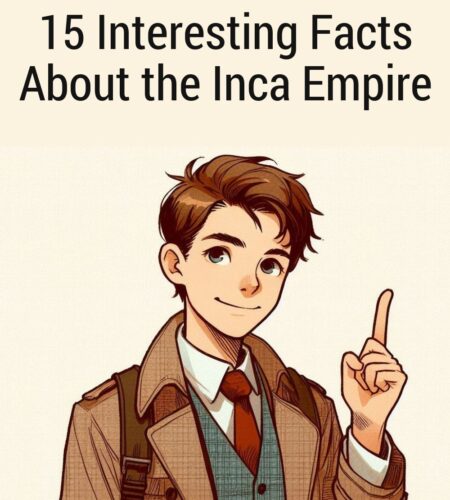Introduction:
The Inca Empire was one of the most dominant civilizations in South America, stretching down the western side of the continent and ruling from the 14th century to the early 16th century. Many details of its past still remain largely unknown, but what we do know is that it left an indelible mark on history. Here are 15 interesting facts about the ancient Inca Empire.
Fact 1: The Incas Rule Wasn’t United
The Inca Empire was made up of multiple ethnic groups, located throughout the Andes. Although they shared a common language, Quechua, and common religious beliefs, the Incas didn’t manage to unify them until the 15th century.
Fact 2: The Capital was in Cusco
The capital city of the Inca Empire was Cusco in Peru. It was located high in the Andes mountains and was the center of power for the Incan people. The city and its surrounding area were greatly revered by the Inca and still is today.
Fact 3: The Incas Used a Highly Advanced Road System
The Incas built a road system that spanned over 40,000 miles and all the way to the Pacific Coast of Ecuador. The roads featured bridges, embankment, tunneling, and even stairs carved right into the mountainside.
Fact 4: Terraces Were a Key Part of Incan Agriculture
The Incas understood the importance of efficient food production and built terraces on the steep slopes of their mountain hillsides. This enabled them to grow food without letting valuable soil wash away in the rainy season.
Fact 5: The Incas Had a Complex System of Writing
The Incas had a form of writing known as quipu, which was composed of knotted strings. Each knot represented a different idea or item, and historians believe that this was a sophisticated way of keeping track of trade, tributes, taxes, and military organization.
Fact 6: Gold Was an Important Currency
The Incas had significant reserves of gold and used it as a currency for trading and taxation. As a result, gold had a major impact on their economy and society.
Fact 7: The Inca Had a Complex Social Structure
The Inca Empire was divided into four distinct social classes: the High Priest, the Warrior Noble, the Citizen Noble, and the Commoner. These classes were hierarchical and determined an individual’s rank and privileges.
Fact 8: The Inca Sun God was at the Center of Worship
The Incas worshiped the Inti, a sun god believed to be the creator of all things. Inti was responsible for providing food and controlling the weather. Special festivals were held in honor of Inti in Cusco each year.
Fact 9: The Inca Used an Accurate Calendar System
The Incas managed to create a complex calendar system that incorporated both lunar and solar cycles. The calendar was also used to track festivals, rituals, and political events.
Fact 10: The Inca Had an Immediate Successor
The Incas left behind several immediate successors, including the Chimú, Tawantinsuyo, Huari, and Chincha. Each of these civilizations continued to use many of the same traditions, religious beliefs, and political systems of the previous Inca Empire.
Fact 11: The Incas Built Extraordinary Structures
The Incas crafted architectural feats that were years ahead of their time, including Triumphal Arches, temples, and even royal tombs. They are also credited with the creation of the famous lost city of Machu Picchu.
Fact 12: Animals Were a Vital Part of Incan Life
Animals played a key role in the Incan way of life, particularly llamas and alpacas, which were used as pack animals, as food sources, and for their valuable wool.
Fact 13: The Incas Pioneered Pottery-Making
The Incas are renowned for their pottery-making skills. Many of these pieces featured intricate geometric patterns, as well as depictions of gods, animals, and Incan rulers.
Fact 14: Astrology was an Important Aspect of Incan Life
The Incas studied the stars, astrology, and astronomy, and even built observatories in the higher reaches of the Andes.
Fact 15: The Incas Had Unusual Punishments
The Incas had a strict system of punishments for wrongdoers, including imprisoning their relatives and tearing out their hair or nail, or even cutting off hands.
Conclusion
The Inca Empire was full of fascinating customs and beliefs that still live on today in Peru and surrounding areas. This empire, which ruled a large part of South America until the early 16th century, was known for its advanced technological achievements and its unique way of life. These 15 facts about the Inca Empire give us a glimpse into the past and help us understand the unique culture of this enigmatic civilization.
Subscribe to our email newsletter to get the latest posts delivered right to your email.



Comments